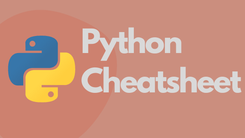Javascript Cheatsheet
JavaScript is a powerful programming language commonly used for web development. Whether you're a beginner or an experienced developer, having a cheat sheet can be incredibly useful for quickly referencing syntax and concepts. In this article, we'll provide you with a handy JavaScript cheat sheet that covers some of the most commonly used elements of the language.
Table of Contents
- Variables and Data Types
- Operators
- Control Flow
- Arrays and Objects
- Error Handling
- Functions And it's Scope
- Asynchronous Programming
- Classes and Objects
- Async / Await
Variables and Data Types
Variables are used to store and manipulate data in JavaScript. Here's how you can declare and assign values to variables:
Operators
JavaScript provides a variety of operators for performing arithmetic, comparison, and logical operations. Here are some examples
Control Flow
Control flow structures allow you to control the flow of execution in your JavaScript code. Here are some commonly used control flow statements:
Arrays and Objects
Arrays and objects are powerful data structures in JavaScript. Here's how you can work with them:
Error Handling
JavaScript provides mechanisms for handling errors and exceptions. Here's an example of how you can use the try...catch statement:
Functions and it's Scope
Asynchronous Programming
Classes and Objects
Async Await
The await keyword pauses the execution of the function until the promise is resolved, and then returns the resolved value.

